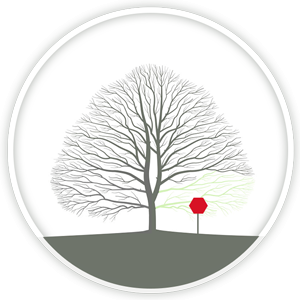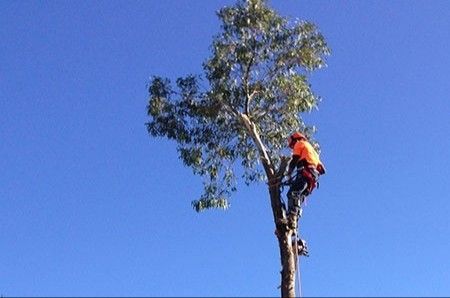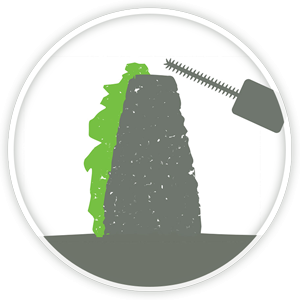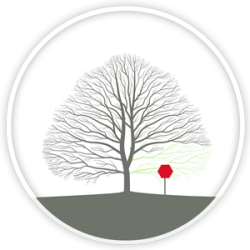Tree Cutting Services
Tree Pruning
There are many reasons to prune a tree, and different ways to achieve the right result for your tree. Some are highly beneficial, others can be completely detrimental. It is important you get the right advice from professional Arborists, ones that care about what they do, take pride in their work and most of all, do so with integrity.
Tree pruning is rarely performed for 'tree health' reasons, what is done above ground is negligible in that respect. Quality tree pruning is more a solution to your needs than the trees own. The best results will come from an Arborist that has the best understanding of your concerns. We will use our expertise and knowledge of the science of Arboriculture to provide you with the best solution that offers long term value.
All our pruning is performed to Australian Standards. We have no interest in performing tree cutting such as Lopping or Topping, as these practices are shunned upon in the modern day tree industry and are a short-sighted approach, performed for the ill-informed public by uneducated tree cutters and is not the work of professional Arborists.
CROWN REDUCTION

Crown Reduction
To reduce the height, spread and volume of a canopy all over by shortening branches and leaders back to suitable smaller interior branches.
Usually to manage the overall size of a tree crown, manage the weight and reduce leverage on branches and leading stems with the purpose of improving on the trees structure and form it has naturally developed.
A tree's primary function is to develop into the most ideal form for efficient photosynthesis. As a result, stand-alone trees (compared to forest trees) will often develop over-extended, end-heavy branches, great for farming sunlight, but a poor architecture for optimal, sound structure. We can 're-design' the trees form to create a safer tree with a lower risk of failure while maintaining a natural appearance.
If this is the service you need Request a Quote
CLEARANCE PRUNING

Clearance Pruning
To reduce or remove branches as required to provide physical clearance of a certain target.
Usually to maintain distance from utility service wires, gutters, roof line or of trees over boundaries of neighbouring properties.
If this is the service you need Request a Quote
FORMATIVE PRUNING

Formative Pruning
To reduce or remove branches as required. To correct or prevent structural defects and encourage good form.
Often done on juvenile trees to prevent many of the above pruning requirements in later years.
If this is the service you need Request a Quote
CROWN LIFTING

Crown Lifting
To raise the lower canopy by removing some of the lowest branches.
Usually to give more physical clearance over footpaths, driveways or lawns and can also be done to offer more light penetration to a garden below.
If this is the service you need Request a Quote
SELECTIVE PRUNING

Selective Pruning
To remove certain identified branches for a specific reason.
This is more often to make a tree fit with the clients needs than it is for an improvement in the trees own structure or health.
If this is the service you need Request a Quote
REMEDIAL PRUNING

Remedial Pruning
To reduce or remove branches as required to correct structural defects and restore a foundation for future growth.
Usually done on mature trees to repair damage after major failures from storm events, other mechanical damage or previous poor 'pruning' practices.
If this is the service you need Request a Quote
CROWN THINNING

Crown Thinning
To reduce canopy density by selectively removing secondary branches throughout the interior of the crown.
Usually done to offer more light penetration to a garden below or enhance the appearance of an otherwise overly dense, unruly tree. Care must be taken not to over-thin or encourage 'lions-tails' where only tufts of foliage remain towards the branch tips.
If this is the service you need Request a Quote
WEIGHT REDUCTION

Weight Reduction
To reduce the length of over-extended, end-heavy lateral branches throughout the canopy.
Done for the same reasons as Crown Reduction, but is limited to only the more lateral branches, and does not include reduction of the height of leading stems in the upper canopy. This is our primary pruning method to improve safety and reduce risk of failing branches in trees.
If this is the service you need Request a Quote
CROWN CLEANING

Crown Cleaning
To remove dead branches ‘deadwood’ and stubs from previous failures or poor 'pruning' throughout the canopy.
This type of pruning is often combined with any of the above pruning types, however some trees require only this.
If this is the service you need Request a Quote
Tree Removal
Removal of a tree is sometimes the most appropriate option. Our professional tree climbers can dismantle a tree in a safe and efficient manner. Using the latest techniques in mobile rigging systems or even using cranes if need be, our team will do whatever it takes to complete the job without causing damage to your home and minimal impact to your garden.
Even in a confined space where your tree is surrounded by valuable landscaping or over your house, our team has not only the knowledge, but importantly the care to do whatever it takes to work around your assets without causing damage.
Your garden will be left clean and tidy, you won't know we've even been there.


Hedge Trimming
There are many types of tall hedges with some reaching heights of twenty feet or more and they all have their own unique features and attributes.
Most hedges are useful as screening, shading, wind breakers or just separating or defining a garden landscape.
Hedges require formative pruning for their first couple of years after planting. Formative pruning is usually carried out in winter or spring. After this, maintenance trimming is carried out, usually once a year for informal hedges and twice a year for formal hedges. Some formal hedges may need three cuts a year. Maintenance trimming is generally carried out between spring and summer.
Hand-held hedge shears are fine for smaller hedges, but for large hedges you'll probably need to use an electric or petrol hedge trimmer, scaffolding/ladders and accurate alignment tools.

Request
a Quote
Request a Quote
Use the form below to provide details of your project. We'll contact you as soon as we are able to discuss and provide a quote.








